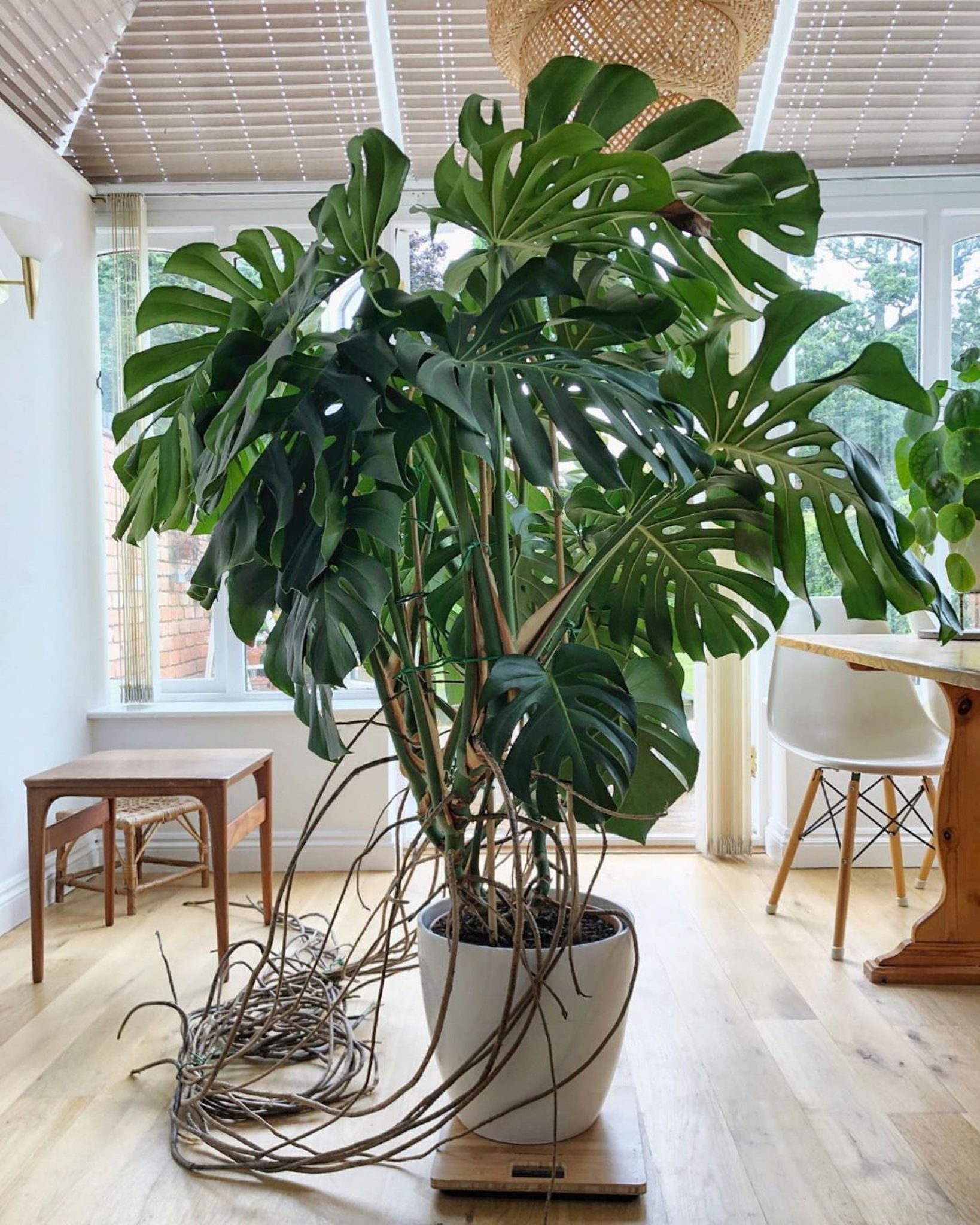
Source homesfornh.com
Monstera plants, known for their large and beautiful leaves, have become incredibly popular as indoor houseplants. With their tropical vibe and relatively easy care requirements, they have captured the hearts of plant enthusiasts everywhere. In this guide, we will delve into all aspects of monstera care indoors, from proper lighting and watering to maintaining optimal humidity levels and dealing with common pests. Whether you are a seasoned plant parent or just starting your indoor plant journey, this article will provide you with valuable insights and tips to ensure your monstera thrives in its indoor habitat.
Choosing the Right Spot for Your Monstera
Lighting
Your monstera’s lighting requirements are crucial to its overall health and growth. These plants prefer bright, indirect light but can tolerate some direct sunlight. Placing your monstera near a north or east-facing window is ideal as it provides a good balance of light intensity. If you have a south or west-facing window, it is recommended to filter the sunlight with sheer curtains or blinds to prevent leaf burn. In low light conditions, your monstera may still survive, but it will grow slower and may develop leggy stems.
Temperature and Humidity
Monstera plants thrive in temperatures between 65°F and 85°F (18°C and 29°C). Avoid exposing your monstera to sudden temperature drops or drafts, as they are susceptible to cold damage. Maintaining a consistent temperature is essential for the well-being of your plant.
As tropical plants, monstera also appreciate higher humidity levels. Aim to keep the humidity around your monstera between 60% and 70%. You can increase humidity by using a humidifier, placing a water tray near the plant, or grouping it with other plants to create a microclimate. Regular misting can also be beneficial, but avoid misting directly on the leaves as it may lead to the development of fungal diseases.
Watering and Fertilizing Your Monstera
Watering
Proper watering is key to successful monstera care. As a general rule, it’s better to slightly underwater than overwater your plant. Allow the top inch or two of the soil to dry out before watering again. Ensure the pot has drainage holes to prevent waterlogging.
During the growing season (spring and summer), your monstera will require more frequent watering compared to the dormant period. Monitor the soil moisture and adjust your watering schedule accordingly. Remember that different factors, such as temperature and humidity, can influence watering needs. Always check the soil moisture before watering.
Fertilizing
Providing your monstera with proper nutrients is essential for its growth and overall health. You can use a balanced, water-soluble fertilizer specifically formulated for houseplants. During the growing season, fertilize your monstera once every 2-4 weeks. Dilute the fertilizer according to the instructions on the package to avoid over-fertilization, which can lead to salt buildup in the soil.
Table Breakdown of Monstera Care Indoors
| Aspect | Care Guidelines |
|---|---|
| Lighting | Provide bright, indirect light; protect from direct sunlight |
| Temperature | Maintain a temperature between 65°F and 85°F |
| Humidity | Maintain humidity levels between 60% and 70% |
| Watering | Allow the top inch of soil to dry out before watering |
| Fertilizing | Use a balanced, water-soluble fertilizer during the growing season |
Frequently Asked Questions About Monstera Care Indoors
1. How often should I water my monstera?
Water your monstera when the top inch or two of soil is dry. This ensures you are not overwatering, which can lead to root rot.
2. Can I place my monstera in a low light area?
While monstera plants can survive in low light conditions, they will grow slower and may become leggy. It’s best to provide bright, indirect light for optimal growth.
3. How can I increase humidity around my monstera without a humidifier?
You can increase humidity by placing a water tray near the plant or by grouping it with other plants. Misting also helps, but avoid misting directly on the leaves to prevent fungal diseases.
4. Can I use tap water to hydrate my monstera?
Tap water can contain minerals and chemicals that may be harmful to your monstera over time. It’s best to use filtered or distilled water to prevent the buildup of these substances in the soil.
5. What should I do if my monstera’s leaves turn yellow?
Yellow leaves can indicate overwatering or improper lighting. Adjust your watering schedule and check the light conditions. If the problem persists, inspect the roots for any signs of rot or pests.
Conclusion
With its stunning foliage and relatively easy care requirements, monstera plants make a wonderful addition to any indoor space. By following the guidelines discussed in this article, you can provide your monstera with optimal conditions for growth and ensure it thrives in its indoor environment. Remember to adapt your care routine to the specific needs of your plant and always listen to its signals. Happy monstera parenting!